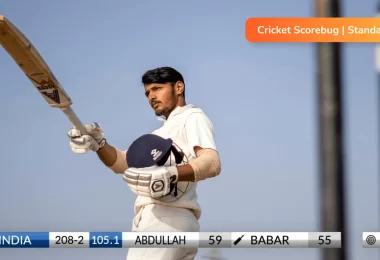In the diverse world of football betting, one niche market has steadily grown in popularity: yellow and red card betting. Unlike traditional wagers focused on match winners or total goals, this market appeals to bettors who enjoy analyzing player behavior, referee tendencies, and emotional dynamics within a game. It’s a perfect combination of psychology and statistics — requiring not just knowledge of football tactics, but also an understanding of discipline and officiating patterns.
The growing appeal of card betting stems from its unpredictability and the number of influencing variables. While goals depend on team skill and chance, yellow and red cards reflect intensity, rivalry, and emotional control. Bettors must examine referee history, team aggression levels, and the context of each competition to make informed predictions.
To master this type of betting, one must first understand how the market works — from the types of bets available to the mathematical models behind the odds.
What Is Yellow and Red Card Betting?
Yellow and red card betting involves predicting the number, type, or recipient of disciplinary cards shown by referees during a football match. Instead of focusing on the scoreline, bettors speculate on whether a match will have many fouls, which players are likely to be booked, or how intense the game’s atmosphere will become.
The core of this market revolves around predicting behavior. For instance, a high-stakes rivalry match is more likely to have several bookings than a friendly encounter. Bettors can wager on the total number of cards, which team will receive more, or even whether a specific player will be shown a card.
Some bookmakers assign “card points” (e.g., 10 points for a yellow, 25 for a red) to quantify totals. This system standardizes the market, making it easier for bettors to compare potential outcomes and apply statistical models.
Understanding this foundation opens the door to exploring the many markets that make card betting both strategic and exciting.
Types of Yellow and Red Card Betting Markets
There are several types of card betting markets, each offering different levels of complexity and risk. The most common include:
- Total Cards (Over/Under): Betting on whether the total number of cards shown will be above or below a certain threshold (e.g., over 4.5 cards).
- Card Handicap: One team is given a head start in card count, balancing the playing field when one side is known for rougher play.
- Team Card Totals: Predicting how many cards a specific team will receive.
- Player Card Markets: Wagering on individual players to be booked or sent off.
- First Card / Last Card: Predicting which team or player will receive the first or final card of the match.
Each of these markets demands a slightly different analytical approach. Total and team cards require macro-level analysis (team discipline and referee style), while player card bets depend on individual behavior and tactical responsibilities.
Total Cards vs. Player Card Bets
Total card bets are based on match flow — the general tempo, competition intensity, and officiating standards. These markets are usually more stable and data-driven, as they rely on aggregate patterns rather than single-player outcomes.
In contrast, player card bets demand micro-level insight. Defenders and defensive midfielders are often at higher risk due to their roles in stopping counterattacks or marking aggressive forwards. Bettors must analyze player tendencies — such as frequent fouling or emotional volatility — to make accurate predictions.
Understanding these differences allows bettors to choose markets that suit their risk tolerance and analytical strengths.
How Bookmakers Calculate Card Betting Odds
Bookmakers use statistical modeling to calculate odds for yellow and red card markets. Historical match data, team discipline statistics, and referee records all play key roles. For example, if a referee averages 5.5 cards per match, and both teams rank high for fouls committed, the bookmaker’s line will likely reflect an “Over 5.0 Cards” setup.
They also factor in situational elements such as:
- Match importance: Derbies or relegation battles often produce more cards.
- Team styles: High-pressing, physical sides typically commit more fouls.
- Referee profiles: Strict referees yield more bookings than lenient ones.
- Weather and pitch conditions: Slippery surfaces can lead to mistimed tackles.
By blending these components, bookmakers create odds that reflect probability — but sharp bettors who understand these patterns can still spot mispriced opportunities where reality doesn’t match the model.
Factors That Influence Card Odds
Several elements influence the likelihood of cards being shown:
- Referee Tendencies: Some referees are notorious for strict discipline, while others let play flow.
- Rivalries and Emotions: Intense derbies often see more fouls and cautions.
- Team Psychology: Clubs under pressure or facing elimination may play more aggressively.
- Game State: A team leading comfortably may play conservatively, while a trailing side might become desperate and reckless.
- Competition Rules: International tournaments or knockout games may involve stricter officiating to maintain order.
Understanding how these variables interact allows bettors to anticipate not just the number of cards, but the timing and type — an edge that transforms speculation into strategy.
Statistical and Tactical Analysis for Card Betting
Data analysis forms the backbone of successful yellow and red card betting. A bettor’s research should focus on three pillars: team discipline, referee history, and tactical behavior.
Historical data can reveal powerful trends — for example, Serie A matches tend to feature more cards than Premier League games due to officiating standards. Similarly, Spanish referees historically issue more bookings for dissent, while English officials are stricter on tackles.
Using Historical Referee and Team Data
Each referee has a unique “disciplinary fingerprint.” Some average just two cards per game, while others hand out five or more. Studying this data helps bettors align their strategy with officiating tendencies.
Likewise, teams and leagues display consistent behavioral patterns. Clubs that rely on aggressive pressing, such as Atlético Madrid, often accumulate more fouls. In contrast, possession-heavy teams like Manchester City usually commit fewer, as they control the tempo.
Combining referee and team data provides an invaluable framework for prediction — allowing bettors to anticipate match dynamics before kickoff.
Tactical and Situational Factors Affecting Card Frequency
While data helps build a foundation, understanding tactics adds the nuance needed to interpret numbers correctly. Football strategy directly impacts foul frequency and card probability.
For example, defensive teams often invite pressure, forcing last-ditch challenges that result in bookings. Midfield battles between evenly matched teams usually generate higher foul counts due to constant transitions. Even substitutions can alter dynamics — a fatigued defender replaced by a fresh, aggressive one may influence card potential.
External factors like weather and crowd atmosphere can further intensify the match, especially in high-stakes scenarios. A wet pitch leads to mistimed tackles, while home crowd pressure can sway referees into issuing cards more readily.
By observing these tactical and emotional shifts, bettors can anticipate when cards are most likely to occur — particularly useful in live or in-play betting.
Effective Strategies for Yellow and Red Card Betting
To bet successfully on yellow and red cards, bettors must blend statistical rigor with contextual intuition. Here are several effective approaches:
- Target High-Intensity Matches: Derbies, relegation fights, and cup finals often produce more bookings.
- Identify Strict Referees: Knowing which officials frequently issue cards can reveal value opportunities.
- Follow Team Trends: Track which teams commit the most fouls or accumulate the most cautions.
- Bet Late in Physical Matches: Odds can shift dramatically after early bookings; timing matters.
- Use Historical Models: Combine referee and team data to forecast probabilities.
In-Play Card Betting Opportunities
Live betting on cards offers dynamic opportunities for quick decisions. By watching a match unfold, bettors can sense when tension rises — for example, after a controversial decision or a heated tackle exchange.
When a referee begins showing early yellows, it often signals a strict officiating tone that could persist throughout the match. Conversely, a calm first half might encourage higher-risk “Over” bets if the match’s pace intensifies later.
Real-time analysis is essential. Observing player emotions, substitutions, and tactical adjustments allows bettors to anticipate booking patterns before odds adjust.
Managing Bankroll and Risk in Card Betting
Like any volatile betting market, card betting requires disciplined financial management. Since bookings can be unpredictable, bettors should maintain conservative staking habits — typically wagering no more than 1–3% of their bankroll per bet.
Tracking performance over time helps identify patterns in both wins and mistakes. It’s equally important to avoid emotional reactions after a loss, as chasing outcomes often leads to reckless betting.
Sustainable betting comes from patience, consistency, and understanding variance. Treating bankroll as a long-term investment rather than short-term profit ensures longevity in this niche market.
Responsible Betting and Trusted Platforms
Responsible gambling remains the cornerstone of success. Setting personal limits and approaching betting as entertainment prevents financial or emotional strain. Bettors should also ensure they use reputable, licensed platforms that guarantee transparency and data protection.
For those who want to explore football betting safely, ufabet เข้าสู่ระบบ offers a trusted environment. It provides comprehensive sports markets, fair odds, and educational insights into football betting while promoting responsible play. Combining secure access with a broad selection of betting options, it’s a platform suited to both beginners and experienced players.
Common Mistakes to Avoid in Yellow and Red Card Betting
Even the most analytical bettors can fall into common traps:
- Ignoring Referee Statistics: Each official’s style drastically affects card outcomes.
- Overemphasizing Rivalries: Not every derby guarantees a high foul count.
- Neglecting Context: Failing to consider lineups, formations, or competition stage reduces accuracy.
- Betting Emotionally: Letting personal bias or frustration guide wagers leads to inconsistency.
Avoiding these mistakes transforms yellow and red card betting from guesswork into a methodical, data-driven process. Discipline, not excitement, determines long-term profitability.
Conclusion — Turning Discipline into a Betting Edge
Yellow and red card betting combines the analytical depth of football statistics with the thrill of psychological insight. By understanding referee behavior, team aggression, and situational triggers, bettors can transform an unpredictable element of the game into a calculated advantage.
Mastery in this market comes from preparation and patience. Those who study data, respect risk management, and remain disciplined will discover that card betting rewards insight over impulse. In the end, success lies not in guessing which player will lose control — but in predicting when and why it will happen.







